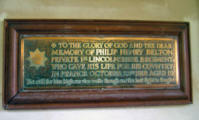ST MARGARET’S CHURCH, WELL
Historic England Reference National Grid Reference:
TF 44405 73375
Church website: https://www.alfordgroup.org.uk/churches/st-margarets-church-
well/
List Entry number 1359700
Church of St Margaret - Grade 1
Click here for the entry See three comments and photos last viewed 12 October
2024
The Church of England Church Heritage Record 621539 web site has the wrong
link to the web site for the church, which is here
For a really interesting introduction to the architecture (with photos) see this
web site http://www.english-church-architecture.net/lincolnshire/well/well.htm
The parish church is dedicated to Saint Margaret, and was built of red brick in
1733 (or 1744) around the same time as Well Vale House. It was altered in the
late 18th century, restored in 1959, and is a Grade I listed building.
Before this Church was built however there was a religious building in the
grounds of the Hall and farm. Destroyed around 1733 when the then owner of
the house rebuilt it and rebuilt the religious house in the style of a church.
Very little is known of this building, indeed it may have been the second
religious building for the village as there is mention of one -
Monument record MLI42019 - MEDIEVAL CHAPEL OF WELL
CHAPEL (Medieval - 1066 AD to 1539 AD)
MEDIEVAL CHAPEL OF WELL. IN THE LATE C12 A GRANT WAS GIVEN TO
THE CHAPEL. {1}{2}{3}
Sources/Archives (3)
<1> SLI3364 Index: SMR FILE. WELL. TF 47 SW Z,1980, TMA.
<2> SLI737 Article in Serial: Dorothy M. Owen. 1975. 'Medieval Chapels in
Lincolnshire' in Lincolnshire History and Archaeology. vol. 10, p.15.
<3> SLI3863 Serial: LINCOLNSHIRE NOTES AND QUERIES. VOL XII P
125.
Click here for the references for the Chapel in Well
The Church was built to replace one nearby which was demolished when the
then owner rebuilt Well Vale Hall in the Georgian style in 1733. When the
house was complete he wanted a folly at the other side of the lakes to set the
scene, he built a replacement church but located it on a South to North axis
rather than East to West as churches usually are.
Although the original church has been completely destroyed the churchyard,
and graves, from the original church are still there. Unfortunately they are not
maintained and it would be a good idea if someone would record the details of
the grave stones for future historians.
From the church web site: Click here for web site
Well is a hamlet with about 40 dwellings, some two miles from the centre of
the market town of Alford. The small church of St. Margaret’s sits on a hill-top,
above a lake in parkland within the Well Vale estate. It was built in 1733 and
replaced the village church, which had been at the foot of the hill where the
original village used to be. Remains of the old churchyard can still be found
near the lakeside.
St. Margaret’s is orientated the wrong way about so that its classical entrance
portico faces the front door of the early Georgian
mansion known as Well Vale Hall. On entering
the church one finds that the communion table
stands in the west instead of the usual east end.
Nevertheless, the interior is beautifully laid out in
prayer-book style and with a gallery.
The college-style box pews face inwards and a
towering three-decker pulpit dominates all.
Services are generally held on the fourth Sunday
of the month at 11am. Over the last five years the
average attendance has increased from eight to
fourteen. Special services at Harvest and the Christmas Candlelit Carol
Service attract congregations that fill both the church and the balcony.
Parish church
The parish church is St Margaret's, a small
church which stands on a hill-top above a
lake in the parkland of the Well Vale estate.
It was built in 1733 and replaced an older
church which stood at the foot of the hill
where the village used to be until cleared
to allow the park to be landscaped.
Remains of the old churchyard can still be
found near the lakeside. It is a remarkable
edifice, built in the full confidence of the
Georgian Age in a classical, Palladian style
to resemble a temple. It does not face east
as
almost every church does, but is
instead aligned so that its classical
entrance portico faces the front door of
Well Vale Hall.
The church was built of red brick in
1733 or 1744 around the same time as
Well Vale House. It was altered in the
late 18th century, restored in 1959, and
is today a Grade 1 Listed Building
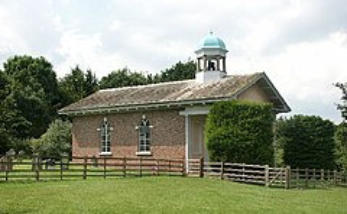

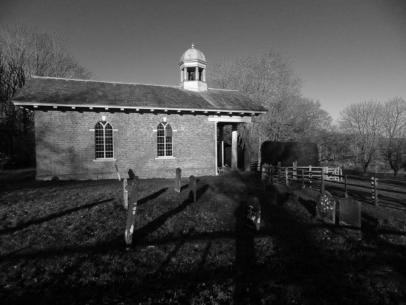
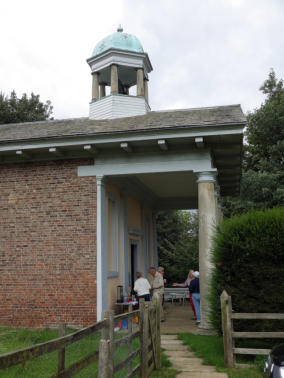

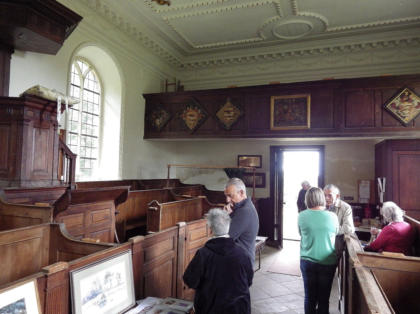

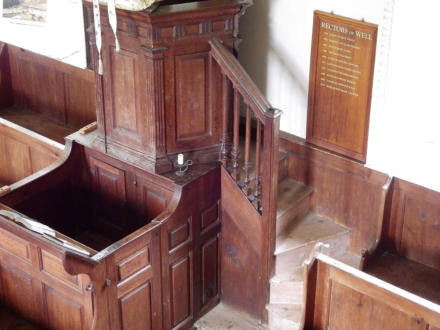

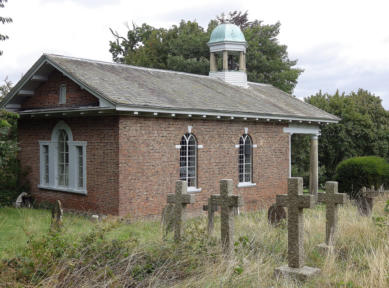
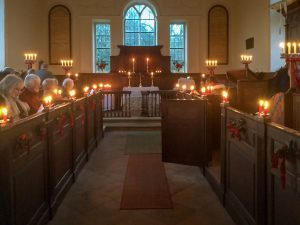
Two plaques on the Church walls
BELTON Philip Henry
To the glory of God and the dear memory of Philip Henry Belton. Private, 1st Battalion, Lincolnshire
Regiment who gave his life for his untry in France 23rd October 1918, aged 19 years.
Yet still for him high service waits though earth’s last fight is fought.
Private 51705. 1st Battalion, Lincolnshire Regiment. Killed in action above date and age. Son of William
Henry and Mary Elizabeth Belton of Well Grange, Lincs. Born Skendleby and enlisted Lincoln, Lincs.
Commemorated Vendegies-Au-Bois British Cemetery. A.1.
Photo by Mike Peck 2007
MARY HASNIP
V.A.D. NURSE WHO DIED AT (Italy)
DEC 10 1919, FROM ILLNESS CONTRACTED
WHILE ON DUTY IN LEICESTER HOSPITAL
Loving and Beloved
From http://www.roll-of-honour.com/Lincolnshire/Well.html World War 1 - Roll of Honour with detailed
information Compiled and Copyright © Michael Peck 2007
Mary Hasnip was born 1895 in Spilsby and died in Bordighera Italy. Her parents were Edward Hasnip and
Betsy Wakefield (Elizabeth?). She was a VAD and worked at Alford Auxiliary Hospital and at the Knighton
VAD Hospital Evington, Leicester
Betsy Hasnip Widow (36) m Charles Brooks at St Wilfred 10 Mar 1910
Betsy Wakefield m Edward Hasnip 1894 at Willoughby
Born June 1895
War Record
1914-1916 at Alford (lived at Claxby)
31/10/1916 to 31/5/18 at North Evington Military Hospital (Lived Welbeck Farm Well)
5th Nth Gen:Leicester
Commissioned Lincs 32
One Scarlet Stripe Nov 1917
Died Dec 10 1919
Stationed at Knighton VAD Hospital Evington
*** *** *** *** ***
If you are searching for family who lived in Well you may find this web site useful -
https://www.findmypast.com/articles/world-records/full-list-of-united-kingdom-records/life-events-
bmds/lincolnshire-monumental-inscriptions
But this page from a business that charges, it is probably easier and cheaper to contact the Lincolnshire
Family History Society and pay them to do a search for you.
It covers Well records at St Margaret Church from 1838 to 1982.
These records include over 200 parishes and were transcribed by volunteer staff at Lincolnshire Family
History Society. Please note that some burial years are only partially transcribed due to illegibility or
omission in the original documents.
*** *** *** *** ***
Historic England Reference National Grid Reference:
TF 44405 73375
List Entry number 1359700
Church of St Margaret - Grade 1
Click here for the entry See three comments and photos last viewed 12 October 2024
The Church of England Church Heritage Record 621539 web site has the wrong link to the web site for the
church, which is here
Also try this website for graves https://www.findagrave.com/cemetery/2720536/st-margaret's-churchyard
Please add anyone you know to this record.
Major Rawnsley is buried there. Also the Murdered Gamekeeper. Also buried is Edward Graves Birth
13 Nov 1757 Cumberworth, East Lindsey District, Lincolnshire, England
Death 10 Mar 1830 (aged 72) Well, East Lindsey District, Lincolnshire, England
Burial St Margaret's Churchyard, Well, East Lindsey District, Lincolnshire, England
Memorial ID 248763919 · View Source
* * * * * * *
Near the church is the Old Rectory. Now a private house, it’s history is interesting. Before 1937 the
Rector lived at the Dower House in Claxby, which was then part of the Well Vale estate. But the villagers
wanted the Rector to live in the village. And so they started to raise money to pay for a Rectory. The
Rawnsley family who owned the Well Vale Estate at the time gave a half acre of land to the village to build
their Rectory, they raised money by whist drives and fetes managed to achieve their goal in 1937.
However by 1970 the various churches in the area were amalgamated into one parish and the Church of
England decided the Rectory was their property and put it up for sale.
Originally the church, church yard and rectory were close to the Hall. Unfortunately we have never been
able to find an illustration of it. But at one point the church as pulled down, most likely by XXX around
1733 when the current church was built. The graveyard however to left and grave stones have been
found, unfortunately the inscriptions were not recorded, but details would be recorded in the parish
records.
One villager said he had found bones in the area of the old Church and graveyard and there was a story
that the estate was given to the first Earl of Lindsey by Charles I in 1626. During the Civil War (1642-
1651) the Earl of Lindsey, a Royalist, was forced to sell Well to a Parliamentarian, Colonel William
Wolley, who then occupied the estate. When Wolley died his body was dug up and scattered by
Royalists. However I have heard that after the Restoration the Wolleys kept their land and sold it
in1695.
There was said to be a Rectory very close to the current church, beside one of the lakes and the
foundations are still there. Unfortunately it is not possible to confirm this as it is private land.
The previous Church Warden was George Kennedy.
oooOOOooo
It would be nice to show the details of those buried in the Churchyard. In no particular order -
Maj. Walter Hugh Rawnsley Birth 1856, Shiplake, South Oxfordshire District, Oxfordshire, England
Death 9 Apr 1936 (aged 79–80) at Well, East Lindsey District, Lincolnshire, England
Burial St Margaret's Churchyard Well, East Lindsey District, Lincolnshire, England
Memorial ID 262468642 Previous owner or Well Vale Hall.
MAJOR WALTER H. RAWNSLEY
Former High Sheriff of Lincolnshire
PROMINENT BREEDER OF HUNTER STOCK
The death occurred on Thursday at Well Vale, near Alford, Lincolnshire, of Major Walter H. Rawnsley, D.L.,
J.P., former High Sheriff of Lincolnshire and a leading man in the county. He was 79. A member an old
Lincolnshire family which had been long associated with the Tennysons of Somersby, Major Rawnsley was
born at Shiplake-on-Thames, Oxfordshire, in 1856, his father, later Canon Rawnsley of Lincoln and Rector
of Halton Hoigate, near Spilsby, being at that time incumbent of Shiplake. He was educated at Eton and
Oxford, where he took a Law degree. It had been his intention to study for the Bar, but forsaking the legal
for the scholastic profession, he was for a while associated with his late brother in a private school near
Winchester, and afterwards acted as a private tutor. Major Rawnsley married in 1890, Helen Maud,
daughter of the late Major Richard Chaplin, Louth. There was a son and a daughter of the marriage. Major
and Mrs. Rawnsley made their home at Well Vale, near Alford In 1893, and 21 years later purchased from
the late Mr. Hamilton Ogllvy the Well Estate, which embraces the Manor of Alford. He also acquired an
estate in Nottinghamshire, as well as extensive lands In Northern Rhodesia; but his most Interesting
purchase was that of Harrington Hall, in 1927, by which he saved from demolition one of the most
beautiful of Lincolnshire's county homes, rich in Tennysonian memories. The garden at Harrington Hall, it
Is Interesting to recall, is the one referred to In Tennyson's poem, " Maud."
Former Master of Southwold
Appointed a county magistrate in 1902, Major Rawnsley was chairman of the Alford magistrates for nearly
20 years, and in 1921 was High Sheriff Lincolnshire. A keen sportsman, he was Master of the Southwold
Hunt for three years, up to 1932; and he was also interested In the breeding of fine hunter stock. He was a
member of the Council of the Hunters Improvement and National Light Horse Society, at whose 1935
show London he received from the hands of the present King the champion cup given by King George V.
for the champion thoroughbred in the show. Another outstanding achievement was the winning, in two
successive years, of the Prince of Wales's Cup at the National Hunters Shows 1925 and 1926, with his
famous gelding Tarpaulin. Major Rawnsley had farmed extensively during the last quarter of a century, and
with his Scotch Shorthorn cattle and his Lincoln Longwool sheep has been a most successful exhibitor the
Royal and other agricultural shows.
Founder of Hospital
In conjunction with Mrs. Rawnsley, widely known through her Red Cross work, he was responsible for the
founding Alford Cottage Hospital, and one his last public engagements was when, in October last year, he
presided the opening of the hospital extensions. The funeral will take place at Well Vale, Alford, this
afternoon. [Yorkshire Post and Leeds Intelligencer - Saturday 11 April 1936, p.7]
MAJOR WALTER H. RAWNSLEY
Coffin Borne on Farm Wagon at Alford
The coffin was carried on a farm waggon drawn by full team of horses at the funeral Saturday, Well Vale,
near Alford, Lincs., Major W. H. Rawnsley, DL, JP. Six of the oldest servants on the estate were bearers.
The simple service was conducted by the Rev. W. Whitehead (Vicar Alford). assisted by Canon H. L.
Harrison (Rector of Halton Holgate). Among the large assembly present were: Lord Henenge
(representing the Lord- Lieutenant of Lincolnshire), the Hon Mrs. Eastwood. Lord and Lady Liverpool.
Field- Marshal Sir A. Montgomery-Massingberd. General Watson. Mr. Eaton Evans (representing Sir
Archibald and Lady Weigall). Lieut.- Col. A. P. Hencage, D.S.O. MP., and Mrs. Major N. V. Stewart. Major
and Mrs. J. St. Vigor Fox. Major B C. Morrison, tor F, D. Newman. Major T. Jessop, Major J H. and Mrs.
Hadfleld. Major H. G. Maddison. Cap!. R. E. Boothby. Capt Oscar Dixon, Miss Rosemary Sanders, Mr. W.
D. Gainsford, Mr H. Hartley, Mrs. C. B. and Mr. V. Fyson (representing Horncastle Divisional Conservative
Association). [Yorkshire Post and Leeds Intelligencer - Monday 13 April 1936, p.5]
St Vedast, Tathwell : High Sheriff of Lincolnshire
In loving memory of Helen Maud Rawnsley OBE JP, widow of
Major Walter Hugh Rawnsley JP, sometime High Sheriff of
Lincolnshire, of Well Vale, Alford, daughter of Lieutenant Colonel
Richard Chaplin DL JP. Born 21st August 1866 Died 25th August
1959. Prominent in the the life of the county especially the British
Red Cross Society and Girl Guides Association.
Flickr Uploaded on November 21, 2022
Taken on September 10, 2022

